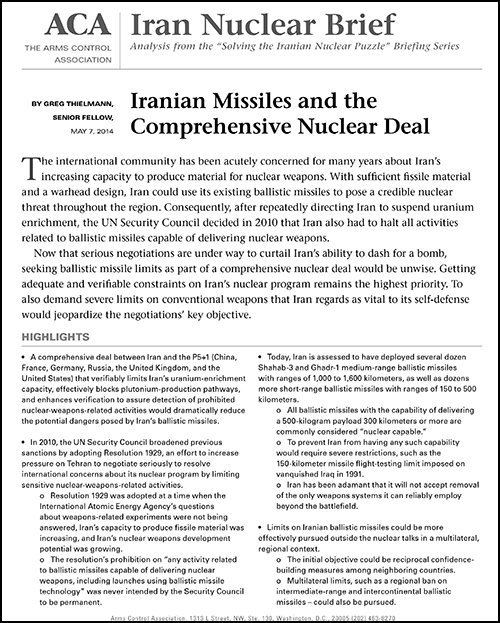March 5, 2015
By Greg Thielmann
 |
| Download PDF |
The future of U.S. and Russian nuclear cruise missiles is at an inflection point. Russia's alleged testing of a ground-launched cruise missile has jeopardized not only the 1987 Intermediate-Range Nuclear Forces (INF) Treaty, but other bilateral nuclear agreements as well, adding further strain to the U.S.-Russian relationship.
The U.S. allegation and Moscow's three counter charges should be resolved with the help of the treaty's Special Verification Commission, which was explicitly designed to deal with compliance issues. But the two countries need to take a broader look at nuclear cruise missiles.
New strategic cruise missiles are part of an unaffordable drive by Washington and Moscow to simultaneously modernize all three legs of their strategic arsenals. Given the increasingly marginal role that nuclear cruise missiles play in ensuring a U.S.-Russian balance and their destabilizing impact when deployed by emerging nuclear powers such as Pakistan, it is time to consider doing away with them entirely.













